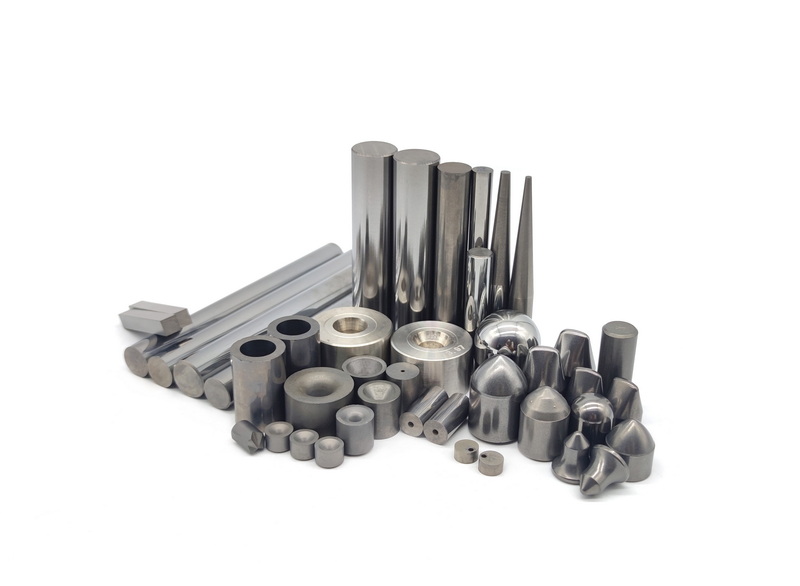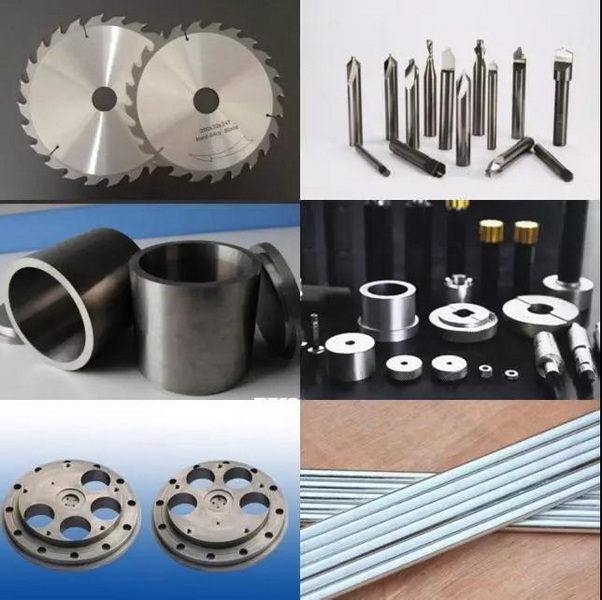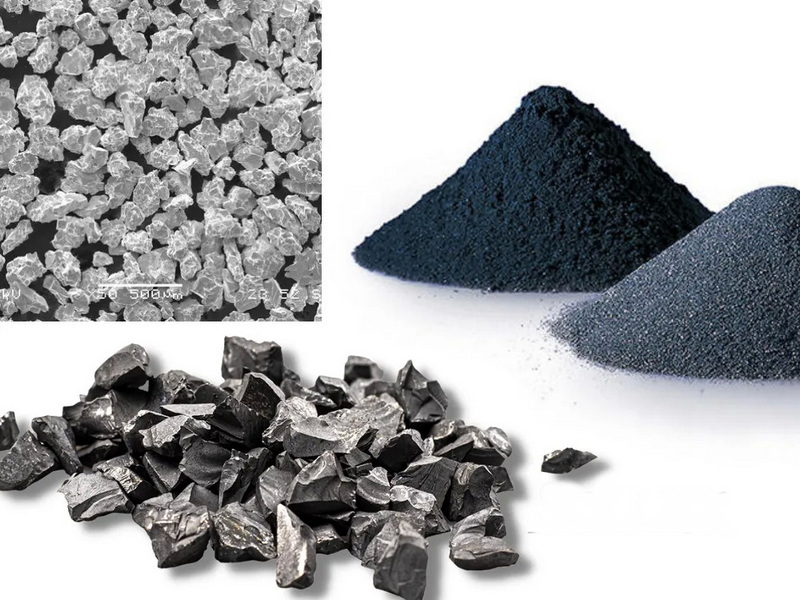Content Menu
● Introduction
● What is Carbide?
● What is Tungsten Carbide?
● Physical and Mechanical Properties
● Chemical and Thermal Stability
● Manufacturing and Processing
● Applications
● Comparison: Which is Stronger?
● Visualizing Tungsten Carbide and Carbide
● Tungsten Carbide Coatings
● Advantages and Disadvantages
>> Advantages of Tungsten Carbide
>> Disadvantages of Tungsten Carbide
● Historical Background of Tungsten Carbide and Carbides
● Environmental Impact and Sustainability
● Future Trends and Innovations
● Practical Tips for Choosing Between Tungsten Carbide and Other Carbides
● Conclusion
● Frequently Asked Questions (FAQ)
>> 1. What is the main difference between tungsten carbide and other carbides?
>> 2. Is tungsten carbide harder than diamond?
>> 3. Why is tungsten carbide used in cutting tools?
>> 4. Can tungsten carbide be used in jewelry?
>> 5. What are the limitations of tungsten carbide?
Introduction
When it comes to industrial materials renowned for their strength, hardness, and durability, "carbide" and "tungsten carbide" often dominate the conversation. But what exactly sets these materials apart? Which one is stronger? To answer these questions, we must dive into the chemistry, properties, and practical applications of both materials.
This article provides a comprehensive comparison of carbide and tungsten carbide, highlighting their strengths, weaknesses, and best uses. Along the way, we will showcase images to help visualize their structures and applications, making complex technical concepts accessible to readers from all backgrounds.

What is Carbide?
Carbides are chemical compounds composed of carbon and a less electronegative element, typically a metal. These materials are known for their exceptional hardness, high melting points, and good thermal and electrical conductivity compared to their parent metals. The strong bonding between carbon and metal atoms gives carbides their unique properties.
There are several types of carbides, including:
- Silicon carbide (SiC)
- Titanium carbide (TiC)
- Calcium carbide (CaC₂)
- Iron carbide (Fe₃C)
- Tungsten carbide (WC)
Each type of carbide has distinct characteristics and is suited to specific applications.
What is Tungsten Carbide?
Tungsten carbide (chemical formula WC) is a compound made from equal parts tungsten and carbon atoms, arranged in a hexagonal crystal structure. It is most commonly used in industrial applications, where it is combined with a metallic binder—usually cobalt or nickel—to form a cermet (ceramic-metallic composite). This combination results in a material that is extremely hard, wear-resistant, and durable.
Tungsten carbide is widely regarded as one of the hardest materials available for industrial use, second only to diamond on the Mohs hardness scale. Its properties make it ideal for cutting tools, wear parts, mining equipment, and even jewelry.
Physical and Mechanical Properties
Let's compare the key properties of general carbides and tungsten carbide.
| Property | General Carbides (e.g., SiC, TiC) | Tungsten Carbide (WC) |
| Hardness (Mohs) | 9–10 (varies by type) | 9–9.5 |
| Melting Point | 2,730–3,160°C (SiC, TiC) | 2,740–2,870°C |
| Density | Lower than WC (e.g., TiC: 4.9 g/cm³) | 15.6 g/cm³ |
| Electrical Conductivity | Semiconductor/insulator | Low resistivity (0.2 μΩ·m) |
| Toughness | Lower (more brittle) | Higher with binder (less brittle) |
| Wear Resistance | High | Extremely high |
Tungsten carbide stands out for its combination of hardness, density, and wear resistance. It is about three times as stiff as steel and twice as dense, with a Young's modulus of 530–700 GPa. Its compressive strength is also remarkable, making it suitable for high-pressure environments.
Chemical and Thermal Stability
Tungsten carbide is stable at normal temperatures and does not oxidize easily in air. However, at temperatures above 300°C, it begins to oxidize, and this process accelerates above 700°C. In contrast, some other carbides, like silicon carbide, are more resistant to oxidation due to their strong covalent bonds.
Tungsten carbide's thermal conductivity is excellent, which allows it to dissipate heat efficiently during high-speed cutting or drilling operations. This property is crucial in applications where tools are subjected to extreme heat.
Manufacturing and Processing
The manufacturing of tungsten carbide involves several steps:
1. Powder Production: Tungsten and carbon powders are mixed in precise ratios.
2. Compaction: The mixture is pressed into the desired shape.
3. Sintering: The compacted material is heated to high temperatures, causing the particles to bond together.
4. Binder Addition: A metallic binder (often cobalt or nickel) is added to improve toughness and reduce brittleness.
This process results in a material that combines the hardness of ceramic tungsten carbide with the toughness of metal, making it suitable for demanding industrial applications.
Applications
Tungsten carbide is used in a wide range of industries due to its exceptional properties:
- Cutting Tools: Tungsten carbide is the material of choice for cutting tools, including turning tools, milling cutters, and drilling bits. Its hardness and heat resistance allow it to maintain a sharp edge even at high temperatures.
- Mining and Drilling: More than half of all tungsten carbide is used in mining and drilling tools, where its wear resistance and durability are essential.
- Wear Parts: Tungsten carbide is used to manufacture wear-resistant parts, such as nozzles, sealing rings, and wire drawing dies.
- Medical Tools: Surgical instruments often feature tungsten carbide tips or blades for their sharpness and longevity.
- Jewelry: Tungsten carbide rings and other jewelry items are prized for their scratch resistance and luster.
Other carbides, such as silicon carbide and titanium carbide, are used in abrasive applications, electronics, and lightweight components where extreme hardness is required but weight is a concern.

Comparison: Which is Stronger?
When people ask, “What is stronger, tungsten carbide or carbide?” they are usually referring to the comparison between tungsten carbide and other types of carbide (like silicon carbide or titanium carbide).
- Hardness: Tungsten carbide ranks between 9 and 9.5 on the Mohs scale, making it one of the hardest materials available for industrial use, second only to diamond. Some specialized carbides, like titanium carbide, can have higher hardness values on the Vickers scale (2800–3200 HV for TiC vs. 1800–2400 HV for WC). However, in most practical applications, tungsten carbide is considered the benchmark for hardness and wear resistance.
- Toughness: Tungsten carbide, when combined with a metallic binder, offers superior toughness compared to other carbides. This makes it less prone to chipping and breaking under impact.
- Density: Tungsten carbide is much denser than most other carbides, which can be an advantage or disadvantage depending on the application.
- Wear Resistance: Both tungsten carbide and other carbides offer excellent wear resistance, but tungsten carbide is generally preferred for its balance of hardness and toughness.
In summary, while some carbides may be harder in specific tests, tungsten carbide is generally considered stronger for most industrial applications due to its combination of hardness, toughness, and wear resistance.
Visualizing Tungsten Carbide and Carbide
Below are images that illustrate the structure and applications of tungsten carbide and other carbides:
- Microstructure of Tungsten Carbide: A microscopic view showing the hexagonal crystal structure and binder metal (cobalt or nickel).
- Cutting Tools: Tungsten carbide inserts used in machining and metalworking.
- Mining Bits: Tungsten carbide tips on rock drilling bits.
- Jewelry: Tungsten carbide rings with a polished finish.
These images help to demonstrate the versatility and strength of tungsten carbide in real-world applications.

Tungsten Carbide Coatings
Tungsten carbide is also used as a coating to protect surfaces from wear and corrosion. The coating process, such as High-Velocity Oxygen Fuel (HVOF) spraying, produces dense, wear-resistant layers that extend the life of critical components. These coatings are essential in industries like aerospace, oil and gas, and manufacturing, where equipment is subjected to extreme conditions.
Advantages and Disadvantages
Advantages of Tungsten Carbide
- Exceptional wear resistance: Tools and components last much longer than those made from steel or other metals.
- High hardness: Maintains a sharp edge and resists deformation.
- Excellent thermal stability: Performs well at high temperatures.
- Good chemical resistance: Resistant to most acids and alkalis.
- High compressive strength: Withstands extreme pressures.
Disadvantages of Tungsten Carbide
- Brittleness: More prone to chipping or cracking under impact than steel or pure tungsten.
- Higher cost: The manufacturing process is complex and expensive.
- Weight: The high density can be a disadvantage in some applications.
- Limited ductility: Requires careful design to avoid brittle failure.
Historical Background of Tungsten Carbide and Carbides
The discovery and development of carbides date back to the late 19th and early 20th centuries. Tungsten carbide was first synthesized in the early 1900s, revolutionizing the manufacturing and tooling industries. Its exceptional hardness and durability quickly made it a preferred material for cutting tools and wear-resistant parts. Over the decades, advancements in powder metallurgy and sintering techniques have improved the quality and performance of tungsten carbide products. The introduction of metallic binders, such as cobalt and nickel, further enhanced toughness, making tungsten carbide indispensable in high-impact and high-wear environments.
The industrial adoption of tungsten carbide accelerated during World War II, when the demand for durable and reliable tooling surged. Since then, the material has become a cornerstone of modern manufacturing, mining, and engineering, with continuous improvements in production methods and alloy formulations.
Environmental Impact and Sustainability
While tungsten carbide offers outstanding performance, its production and disposal raise environmental concerns. The mining of tungsten and cobalt, essential components of tungsten carbide, can lead to habitat destruction and pollution. Tungsten mining, in particular, is associated with significant environmental disruption, including soil degradation and water contamination. Cobalt mining, often conducted in regions with limited environmental oversight, poses additional risks to local ecosystems and communities.
Additionally, the recycling of tungsten carbide is complex but increasingly important to reduce environmental impact. Tungsten carbide scrap can be reclaimed and reprocessed, but the process requires specialized equipment and expertise. Efforts are underway to develop more sustainable manufacturing processes and to improve recycling technologies. Innovations such as closed-loop recycling systems and the use of alternative, less toxic binders are being explored to minimize the ecological footprint of tungsten carbide production.
Future Trends and Innovations
Research continues to enhance the properties of tungsten carbide and other carbides. Innovations include the development of nano-structured carbides, improved binder materials to increase toughness, and advanced coating techniques to extend tool life. Nano-structured tungsten carbide, for example, offers superior hardness and wear resistance at the microscopic level, opening up new possibilities for precision machining and high-performance applications.
Improved binder materials, such as novel alloys and composite matrices, are being developed to further enhance the toughness and impact resistance of tungsten carbide tools. Advanced coating techniques, such as physical vapor deposition (PVD) and chemical vapor deposition (CVD), are being used to create ultra-hard, wear-resistant surfaces on cutting tools and industrial components.
These advancements aim to meet the growing demands of industries such as aerospace, automotive, and electronics, where materials must withstand extreme conditions while maintaining performance. The integration of smart manufacturing technologies, such as additive manufacturing (3D printing) of tungsten carbide components, is also expected to revolutionize the production and customization of carbide-based tools and parts.
Practical Tips for Choosing Between Tungsten Carbide and Other Carbides
When selecting materials for specific applications, consider the following:
- Application Environment: High-temperature or corrosive environments may favor certain carbides over others. For example, silicon carbide excels in high-temperature, corrosive, or oxidizing atmospheres.
- Mechanical Requirements: Balance hardness and toughness based on the expected stresses. Tungsten carbide is preferred for high-impact, high-wear applications, while silicon carbide may be better suited for lightweight, high-temperature uses.
- Cost Considerations: Tungsten carbide is generally more expensive but offers longer tool life, reducing long-term costs. Other carbides may be more cost-effective for less demanding applications.
- Weight Constraints: For lightweight applications, silicon carbide or titanium carbide may be preferable due to their lower density compared to tungsten carbide.
By understanding these factors, engineers and designers can make informed decisions to optimize performance and cost-effectiveness.
Conclusion
In the debate of “what is stronger, tungsten carbide or carbide,” the answer depends on the specific type of carbide and the intended application. Tungsten carbide stands out for its unparalleled combination of hardness, toughness, and wear resistance, making it the material of choice for cutting tools, mining equipment, and wear parts. While some other carbides may be harder in certain tests, tungsten carbide's overall performance and versatility make it the stronger option for most industrial uses.
Its exceptional properties, coupled with ongoing advancements in manufacturing and coating technologies, ensure that tungsten carbide will remain a cornerstone of modern industry for years to come. As research continues to push the boundaries of material science, the future of tungsten carbide and other carbides looks bright, with innovations promising even greater performance, sustainability, and versatility.

Frequently Asked Questions (FAQ)
1. What is the main difference between tungsten carbide and other carbides?
Tungsten carbide is a specific compound (WC) known for its extreme hardness and toughness, especially when combined with a metallic binder. Other carbides, like silicon carbide (SiC) or titanium carbide (TiC), have different chemical compositions and properties, often with higher hardness but lower toughness.
2. Is tungsten carbide harder than diamond?
No, tungsten carbide is not harder than diamond. Diamond ranks 10 on the Mohs hardness scale, while tungsten carbide ranks between 9 and 9.5.
3. Why is tungsten carbide used in cutting tools?
Tungsten carbide is used in cutting tools because of its exceptional hardness, wear resistance, and ability to maintain a sharp edge at high temperatures. This results in longer tool life and more efficient machining.
4. Can tungsten carbide be used in jewelry?
Yes, tungsten carbide is widely used in jewelry, especially rings, due to its scratch resistance, luster, and durability. It is also hypoallergenic and does not tarnish.
5. What are the limitations of tungsten carbide?
The main limitations of tungsten carbide are its brittleness (it can chip or crack under impact), higher cost compared to steel or other metals, and its weight due to high density.

















